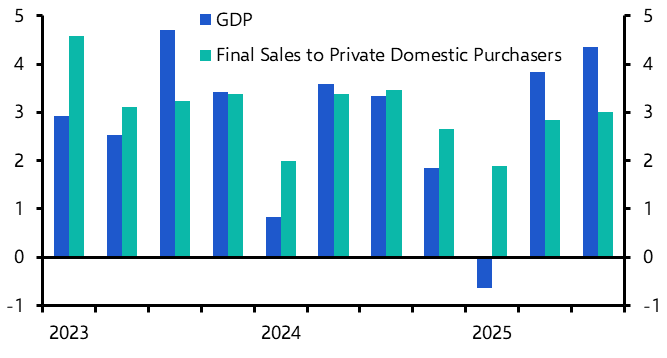Last week I offered a post-mortem on inflation’s dramatic return and argued that the key question now was whether it would spread from energy and core goods to other areas of the economy, particularly services. There are two things to consider in this regard. The first is the overall balance between demand and capacity in the economy and, in particular, what’s happening in labour markets. The second is how policymakers respond.
Labour market developments are critically important because if the psychology of higher inflation is to take root it will do so through wages and pay settlements. This inevitably invokes discussion of the much-feared wage-price spiral. In fact, this is more accurately described as a price-wage spiral: the theory is that workers respond to higher inflation by demanding more wages, which in turn fuels a further acceleration in inflation.
Whatever the label, a common view is that price-wage spirals are a relic of the past. De-unionisation, globalisation, and the increased fragmentation of the labour market have all combined to reduce workers’ ability to bargain for higher pay in response to higher inflation.
This seems overly sanguine. Workers have not lost bargaining power entirely. If firms’ pay falls too far below inflation, then they will see more quits, thus forcing them to raise wages. But workers are only likely to quit if they can easily find another firm that’s willing to pay them more. So, it’s not the case that price-wage spirals have been confined to the dustbin of history, it’s just that, compared to the past, labour market conditions need to be much tighter now in order for them to materialise. In other words, the Phillips Curve relationship between unemployment and wages is not completely flat, it is more kinked. (See Chart 1.)
Chart 1: Illustrative states of the Phillips Curve

Source: Capital Economics
The key question for central banks when it comes to the labour market is how tight is too tight? This is extremely difficult to judge. On the one hand, quit rates have spiked and, in the US, are now consistent with average earnings growing by 5% y/y. (See Chart 2.) Assuming a trend productivity growth rate of 2%, this is clearly inconsistent with a 2% inflation target.
Chart 2: US Quit Rate & Average Hourly Earnings

Sources: Refinitiv, Capital Economics
But at the same time, employment is still lower than it was before the pandemic, when nobody was concerned about runaway wage growth or price-wage spirals. (See Chart 3.) Inflation hawks can argue that because the pandemic has caused some workers to retire early or exit the workforce for other reasons, lower employment reflects the fact that the labour force is now smaller. But it’s unclear whether these changes are permanent. It’s possible that the labour supply will rebound over time, and that the current tightness in jobs markets will ease as post-pandemic frictions fade. The Phillips Curve is a useful conceptual framework, but right now is of little practical help to policymakers.
Chart 3: G7 Employment (Q4 2019 = 100)

Sources: Refinitiv, Capital Economics
This brings us to the question of how central banks will respond. The answer will depend on their objectives and how they view the balance of risks around their central forecasts. Do they err on the side of allowing demand to run hot, and tolerate the higher wage and price inflation that will follow if they misjudge the amount of slack in the economy? Or do they stick more rigidly to their price stability mandates and raise interest rates as economies rebound and measures of spare capacity tighten?
We had previously thought that the Fed’s move to “Flexible Average Inflation Targeting” might presage a new era in which central banks put much less weight on keeping inflation low and stable and substantially more weight on other goals such as maintaining full and inclusive employment. But the pivot at the end of last year to focus more on inflation has called this into question. In the event, it seems that the new Fed looks a lot like the old Fed.
So where does this leave us? Several points stand out. First, while we expect inflation to drop back this year, the current tightness of labour markets means that it is likely to fall more slowly than most anticipate. Second, reflecting this, we think that over the next couple of years central banks will tighten policy by a bit more than the consensus expects and markets are pricing in (although the latter has admittedly swung around a lot in recent days. Our forecasts are here.) Finally, the flip side of this policy tightening is that we think that inflation later in the decade will be lower than we had previously anticipated. (We will publish our updated Long Run forecasts over the coming weeks - check here for more details.)
All forecasts are subject to uncertainty, and the dislocation caused by the pandemic mean that uncertainties are unusually high right now. The turmoil in equity markets has understandably grabbed the headlines in recent weeks but as we navigate the way ahead, it’s important to keep in mind that it’s developments in labour markets that will ultimately determine the future path of inflation and interest rates.
In case you missed it:
- Our Chief Europe Economist, Andrew Kenningham, explores the economic consequences for the euro-zone of the crisis in Ukraine.
- Our Markets Economist, Oliver Allen, argues that US equities will underperform their peers elsewhere in the developed world – but outperform their EM counterparts.
- Our UK team previews this week’s MPC meeting and argues that the Bank of England will tighten policy by more than the consensus expects this year.


